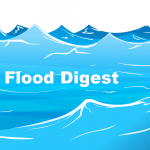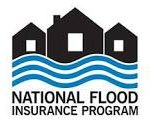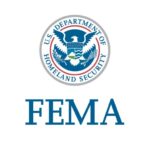Closing the flood protection gap
 Congress has temporarily extended the National Flood Insurance Program through mid-December, while a report suggests insurance companies need partners to reduce flood risks worldwide. Plus, FEMA clarifies underwriting requirements in its Risk Rating 2.0 methodology on federal flood insurance policies. It’s all in this week’s Flood Digest.
Congress has temporarily extended the National Flood Insurance Program through mid-December, while a report suggests insurance companies need partners to reduce flood risks worldwide. Plus, FEMA clarifies underwriting requirements in its Risk Rating 2.0 methodology on federal flood insurance policies. It’s all in this week’s Flood Digest.
 NFIP Reauthorization: Congress last week passed a continuing resolution and signed by the President to keep the National Flood Insurance Program going through December 16. Hurricane Ian’s flood damage across Florida is raising the drumbeat for Congress to stop these temporary reauthorizations and instead revamp FEMA’s NFIP to make the needed structural changes to stop its further decent into debt and extend affordable coverage to more Americans. FEMA itself is anxious for this to happen.
NFIP Reauthorization: Congress last week passed a continuing resolution and signed by the President to keep the National Flood Insurance Program going through December 16. Hurricane Ian’s flood damage across Florida is raising the drumbeat for Congress to stop these temporary reauthorizations and instead revamp FEMA’s NFIP to make the needed structural changes to stop its further decent into debt and extend affordable coverage to more Americans. FEMA itself is anxious for this to happen.
“NFIP reauthorization is an opportunity for Congress to take bold steps to reduce the complexity of the program and strengthen the NFIP’s financial framework so that the program can continue helping individuals and communities take the critical step of securing flood insurance,” FEMA said in a release. “The level of damage from recent catastrophic storms makes it clear that FEMA needs a holistic plan to ready the nation for managing the cost of flooding under the NFIP.”
 Closing the Flood Protection Gap: The Insurance Information Institute (Triple-I) is out with a new report that says while our awareness and understanding of weather and climate risk has grown in recent decades, there’s a lot of work left to be done to establish a mindset across industries and governments focused on resilience. Floods are comprising a growing share of insurance losses and the cost on the global economy itself totaled more than $82 billion in 2021. The report suggests the insurance industry is well-positioned to promote the broader resilience mindset needed.
Closing the Flood Protection Gap: The Insurance Information Institute (Triple-I) is out with a new report that says while our awareness and understanding of weather and climate risk has grown in recent decades, there’s a lot of work left to be done to establish a mindset across industries and governments focused on resilience. Floods are comprising a growing share of insurance losses and the cost on the global economy itself totaled more than $82 billion in 2021. The report suggests the insurance industry is well-positioned to promote the broader resilience mindset needed.
“Our understanding of loss trends and expertise in assessing and quantifying risk must be joined at the hip to technology, public policy, finance, and science,” said Triple-I CEO Sean Kevelighan. “We need to partner with communities and businesses at every level to promote a broad resilience mindset focused on pre-emptive mitigation and rapid recovery.”
 Risk Rating 2.0: FEMA is out with its updated edition of the NFIP’s Risk Rating 2.0 Flood Insurance Manual effective Oct. 1. The agency’s regular updates to the manual reflect an ongoing effort to deliver clear guidance in an easy-to-understand format. The guidance in this edition reflects the NFIP’s existing underwriting requirements and its current rating methodology, Risk Rating 2.0. It does not change flood insurance coverage or supersede the terms and conditions of the Standard Flood Insurance Policy.
Risk Rating 2.0: FEMA is out with its updated edition of the NFIP’s Risk Rating 2.0 Flood Insurance Manual effective Oct. 1. The agency’s regular updates to the manual reflect an ongoing effort to deliver clear guidance in an easy-to-understand format. The guidance in this edition reflects the NFIP’s existing underwriting requirements and its current rating methodology, Risk Rating 2.0. It does not change flood insurance coverage or supersede the terms and conditions of the Standard Flood Insurance Policy.
LMA Newsletter of 10-10-22

